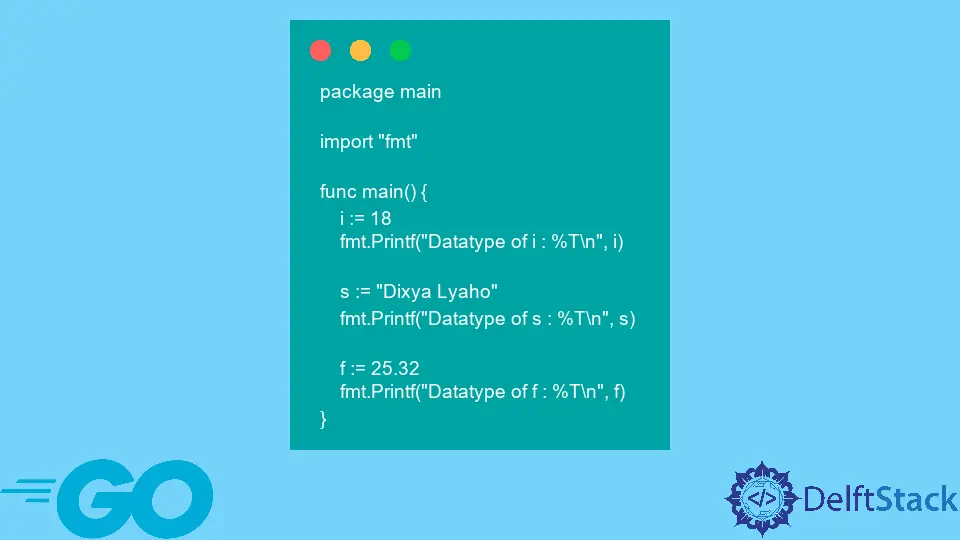如何在 Go 中查詢物件的型別
Suraj Joshi
2023年12月11日
Go
Go Data Type

資料型別指定與有效 Go 變數關聯的型別。Go 中有四類資料型別,如下所示:
- 基本型別:數字,字串和布林值
-
集合型別:陣列和結構
-
參考型別:指標,切片,Map,函式和通道
-
介面型別
我們可以使用字串格式,反射包和型別斷言在 Go 中找到物件的資料型別。
在 Go 中字串格式以查詢資料型別
我們可以將軟體包 fmt 的 Printf 功能與特殊格式設定一起使用。使用 fmt 顯示變數的可用格式選項是:
| 格式 | 描述 |
|---|---|
%v |
以預設格式列印變數值 |
%+v |
用值新增欄位名稱 |
%#v |
該值的 Go 語法表示形式 |
%T |
值型別的 Go 語法表示形式 |
%% |
文字百分號;不消耗任何價值 |
我們在 fmt 包中使用%T 標誌來在 Go 語言中找到物件的型別。
package main
import "fmt"
func main() {
i := 18
fmt.Printf("Datatype of i : %T\n", i)
s := "Dixya Lyaho"
fmt.Printf("Datatype of s : %T\n", s)
f := 25.32
fmt.Printf("Datatype of f : %T\n", f)
}
輸出:
Datatype of i : int
Datatype of s : string
Datatype of f : float64
Go reflect 包
我們也可以使用 reflect 包來查詢物件的資料型別。reflect 包的 Typeof 函式返回值可以通過 .String() 轉換為字串資料型別。
package main
import (
"fmt"
"reflect"
)
func main() {
o1 := "string"
o2 := 10
o3 := 1.2
o4 := true
o5 := []string{"foo", "bar", "baz"}
o6 := map[string]int{"apple": 23, "tomato": 13}
fmt.Println(reflect.TypeOf(o1).String())
fmt.Println(reflect.TypeOf(o2).String())
fmt.Println(reflect.TypeOf(o3).String())
fmt.Println(reflect.TypeOf(o4).String())
fmt.Println(reflect.TypeOf(o5).String())
fmt.Println(reflect.TypeOf(o6).String())
}
輸出:
string
int
float64
bool
[]string
map[string]int
型別斷言方法
型別斷言方法返回一個布林變數,以判斷斷言操作是否成功。我們使用 switch 方法來串聯執行幾個型別斷言,以找到物件的資料型別。
package main
import (
"fmt"
)
func main() {
var x interface{} = 3.85
switch x.(type) {
case int:
fmt.Println("x is of type int")
case float64:
fmt.Println("x is of type float64")
default:
fmt.Println("x is niether int nor float")
}
}
輸出:
x is of type float64
Enjoying our tutorials? Subscribe to DelftStack on YouTube to support us in creating more high-quality video guides. Subscribe
作者: Suraj Joshi
Suraj Joshi is a backend software engineer at Matrice.ai.
LinkedIn